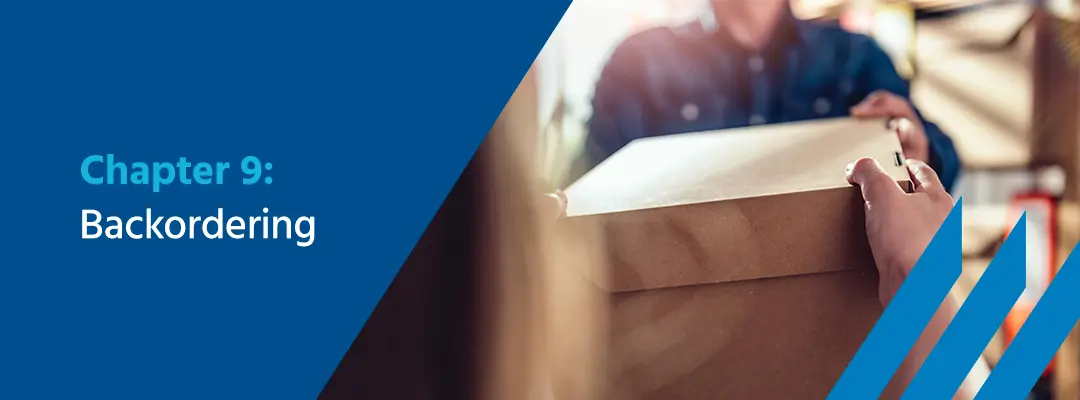Chapter 9: Backordering

Another one of the essential inventory management techniques in operations management is backordering.
What Is Backordering?
Backordering occurs when your company decides to accept orders and receive payments for products that are out of stock. Essentially, this means you order a product only after a customer places an order for it.
Though backordering can be financially beneficial, if you’re unprepared, it can be an enormous logistical challenge. When one item is backordered, you can simply create a new purchase order and let the customer know when they can expect the item to arrive. However, when several items are backordered, the issues can quickly start to grow.
Pros and Cons of Backordering
There are several pros and cons to consider if you want to allow customers to backorder items with your company.
Pros
The advantages of backordering include:
- Increased sales: Letting customers backorder can keep them from going to your competitors, which means fewer lost sales.
- Improved cash flow: Backordering can mean you get paid before you spend money ordering products.
- Saved storage space: When you order a product only after a customer orders it, you ship it out as soon as it arrives, saving you storage space.
- Lowered risk of overstock: Waiting until a customer orders a product to order it yourself means you’ll never have to worry about having more products than you can sell.
Cons
However, there are some disadvantages of backordering to consider before you move forward, including:
- Longer wait times for fulfillment: Because a customer has to wait for you to receive a product from your supplier before you can send it to them, they’ll wait longer to receive their item.
- Risk of customer dissatisfaction: Discovering an item is out of stock or has a long wait time can increase customer dissatisfaction with your company.
Weigh these pros and cons to determine whether backordering is a good idea for your company.
What Companies Should Use Backordering?
For many businesses, backordering can increase sales, which is why so many are willing to backorder items. Small retailers, in particular, may need to avoid the risk of overstocking. However, even larger businesses can take steps to mitigate the risks of backordering.
For example, your company can label an item with a preorder option rather than “buy now.” You could also use the “no-stock” approach, which means you take only backorders until you generate enough sales to place a bulk order with your supplier. These steps can create a reasonable expectation among your customers that items will take more time to arrive.
If you sell larger or more valuable items, customers tend to have more tolerance for long delivery times. In these cases, backordering may be a viable option for your company.
How Finale Inventory Can Help
At Finale Inventory, our software lets you track inventory from raw materials to works in process and finished goods. Combined with sales velocity tracking to aid in demand planning, Finale Inventory is a complete solution for operations management. To learn more, ask about a personalized demo or start your free trial today.

Get Started with Finale
Our guided implementation during your onboarding will set you on the path to scaled business growth in just two weeks.
Get a demo on the
first call.Pricing is fair and
transparent.Onboarding starts
with a dedicated consultant.
Get a demo on the
first call.Pricing is fair and
transparent.Onboarding starts
with a dedicated consultant.
Your time is valuable. That's why we jump into the software during your first call.
Finale offers competitive pricing because users stay and grow.
Guided implementation during your onboarding to be set for success.



